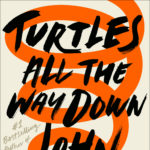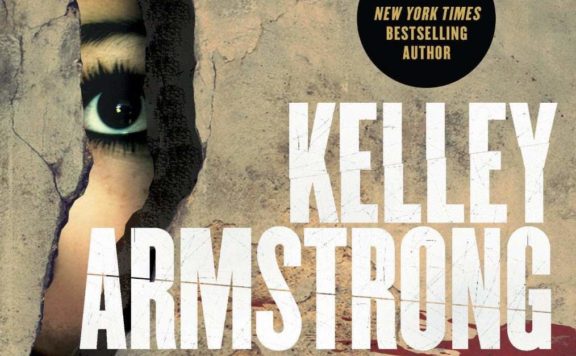Warning: this review may contain spoilers for Turtles all the Way Down, by John Green.
Turtles all the Way Down showcases John Green’s talent for capturing the pain of human existence in whole new ways. The Fault in Our Stars crushes readers by showing how teenagers deal with death and depression. Looking for Alaska encapsulates the experience of falling in love for the first time. Turtles all the Way Down takes an important step forward with its realistic, visceral representation of mental illness and anxiety.
I knew going into Turtles All the Way Down that Green has a way of driving a spear-point into my emotional core. The Fault in Our Stars wrecked me, and Looking for Alaska brought me back to happy days in my youth that led to me finding some of my best friends to this day. I thought Green’s previous books had prepared me for another emotional roller coaster.
But I wasn’t prepared for Turtles All the Way Down. Turtles wasn’t an emotional rollercoaster for me. Reading Turtles All the Way Down was like looking in the mirror at my mind.
It’s weird to say that a story told from the point of view of a teenage girl from Indianapolis named Aza could so accurately embody my experience of life as a 27-year old man. However, Green’s depiction of how anxiety feels was so familiar it had me telling a friend, “The main character is me.”
Mental Illness Depiction
Aza is a teenage girl consumed by daily existential crises caused by anxiety. Green’s portrays mental illness as a crippling, exhausting, and frustrating disease. Rather than romanticizing or glorifying mental illness, he shows anxiety is a constant war that must be fought day by day. Not only does Green give an in-depth, realistic examination of life with anxiety, he doesn’t treat mental illness as a problem that needs to be cured by the end of the novel. Anxiety is something you live with and manage with medication and therapy. A person can get better at dealing with anxiety, but it doesn’t go away completely. Mental illness takes a toll, and Turtles all the Way Down is a brilliant and important character study focused on what living with anxiety is really like.
No one’s experience with anxiety is exactly the same, but Green captures the essence of the hell that is anxiety.
Aza’s anxiety manifests through intrusive thoughts, thought spirals, and compulsive actions. Intrusive thoughts are negative thoughts that seem to invade and take over a person’s entire mind. People with certain kinds of anxiety often have difficulties banishing these thoughts, and they can feed into dangerous thought spirals and compulsions.
For example, Aza spends a ton of time worrying about germs from a variety of sources. If she touches a surface, she often thinks about how many millions of bacteria germs she just got on her hand, which leads her to feel compelled to wash her hands. Washing your hands after touching a dirty surface is normal, but Aza cannot control her reaction to interacting with basically any surface. She barely eats lunch at school because of the possible contamination of her food. Once she starts thinking about the bacteria on her sandwich, she can’t stop thinking about it, and she can’t eat because her anxiety makes her nauseous.
 Aza shows many of the stereotypical signs of anxiety and obsessive-compulsive disorder. For example, she is a germaphobe and often feels compelled to wash her hands multiple times before the compulsion fades. However, Green goes further by exploring Aza’s constant internal struggle with her intrusive thoughts and the terrifying question of whether she is in control of her body, or if she is a prisoner trapped in a body-shaped cell her intrusive thoughts and compulsions command?
Aza shows many of the stereotypical signs of anxiety and obsessive-compulsive disorder. For example, she is a germaphobe and often feels compelled to wash her hands multiple times before the compulsion fades. However, Green goes further by exploring Aza’s constant internal struggle with her intrusive thoughts and the terrifying question of whether she is in control of her body, or if she is a prisoner trapped in a body-shaped cell her intrusive thoughts and compulsions command?
Writers often show the physical signs of anxiety, but few delve deep into the inner workings of the anxious mind. Green’s first-person narration allows him to dig into the mental experience of living with anxiety. Aza often tries to fight against her intrusive thoughts, but she finds that fighting them only leads to them coming back stronger. By fighting them, she feeds into the worry they cause. Then the intrusive thoughts lead her down a thought spiral where she can’t escape the negative thoughts eating away at her until she gives in and completes the compulsion. The problem is that acting on the compulsion only reinforces the intrusive thoughts and creates a vicious cycle.
As someone who struggles with anxiety and intrusive thoughts, you might expect me to have had a strong emotional reaction to Turtles all the Way Down. I cried through most of The Fault in Our Stars, and even some of Looking for Alaska, but I had a very different reaction while reading Turtles.
I felt numb.
Green’s description of Aza’s fight with her anxiety is gut-punching, and at almost every turn it had me thinking, this has happened to me. I’ve had irrational worries take over my mind and I could not get them out, no matter what I tried. I’ve had to lay there and ride out the waves of heat and exhaustion washing over me again and again like the tide smashing into the port. I have spent nights I could have been with friends totally absorbed in my own inner war, the thought spiral like a whirlpool I’m desperately trying to escape. At certain times the book was difficult for me to read without my own anxiety triggers activating because of some of the visceral descriptions in the course of the novel. There were times when the thoughts slipped through my barriers, and I was sent careening down spirals with the main character. I don’t know whether to love this book for its masterful portrayal of the horrors of living every day at war with your own mind or hate it for reminding me of them. And I think that’s the point in the end.
Characters
Aza is a frustrating character. Her anxiety causes her to be focused on herself a lot of the time. She has trouble connecting and empathizing with others because she’s trapped inside her own spiraling thought process. This also leads many of the other characters to be slightly underdeveloped because the narrator is so stuck in her own head, which causes a great deal of conflict. Aza’s a strong character, but she’s frustrating because anxiety is frustrating.
Daisy, Aza’s best friend and partner in crime, provides a great counter-balance to Aza’s reserved nature. She’s funny, outgoing, and totally unpredictable. At times, I thought Daisy was a little grating, but her relationship with Aza forms the backbone of the novel, and I grew to like her.
In my opinion, Davis is the weakest character of the three main characters in Turtles. He has an interesting link to the plot of the novel, being one of the sons of a rich businessman who has fled from the law, but as a love interest, he fell flat. This is part of the point, Aza has incredible difficulties connecting with people, but I never felt like Davis had much of an appeal as a partner for Aza. He’s just a rich kid she used to know who happens to be a guy, so she needs him to be a love interest. It felt a bit forced.
Plot
As I mentioned, the plot of the novel revolves around the mystery of Davis’ dad’s disappearance after the cops start investigating his business, and how Aza and Daisy both want to find him to get the reward money. The actual plot of the novel is a bit meandering and it lacks depth. The real story isn’t about the events that occur in the novel; it’s about the relationships between Aza, Daisy, and Davis. Turtles all the Way Down is a character study of a teenager struggling with anxiety first, and a story second. That works for the novel though. A more involved plot might have overshadowed Aza’s inner struggle to keep herself and her friendships going despite her anxiety.
One amazing aspect of the novel is the tension in the air. The novel itself is written like one long thought spiral Aza is being ensnared by, and throughout the whole book, the reader is left waiting for the tension to snap.
Final Thoughts
Overall, Turtles all the Way Down is an important glimpse at how anxiety affects the human mind. It is a great character study, but its plot and character other than Aza suffer from a lack of being the focus of the novel. The novel focuses most of its power and attention on Aza and her inner struggles, which is a double-edged sword. Green’s portrayal of mental illness, through his close first-person narration, is highly effective and anyone looking to understand the pain of anxiety needs to check out Turtles all the Way Down.
As a side thought, while reading Turtles all the Way Down, I couldn’t get the litany against fear, from Frank Herbert’s Dune, out of my mind:

If, as Frank Herbert says, fear is the mind killer, then anxiety is the dagger fear wields as it stabs again and again at the brain. John Green’s Turtles all the Way Down shows how anxiety hollows out the human spirit and leaves it a fragile shell of what it once was.





